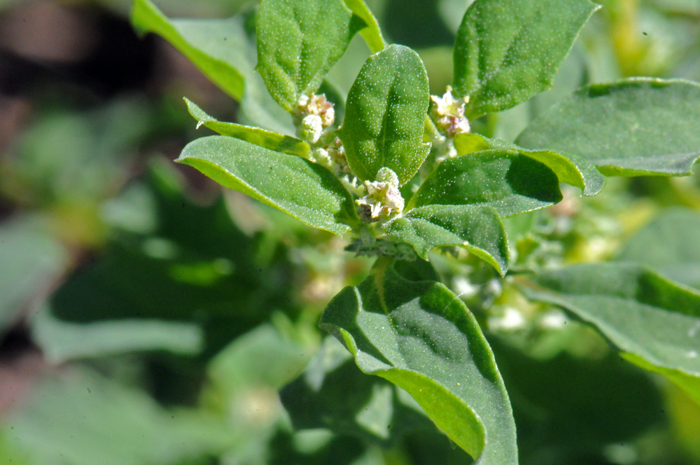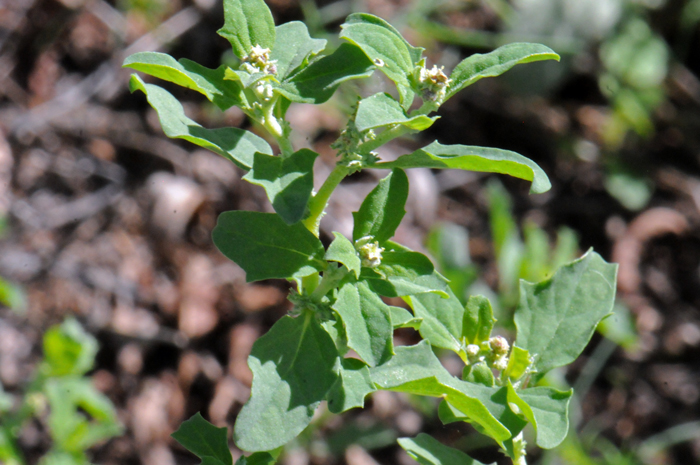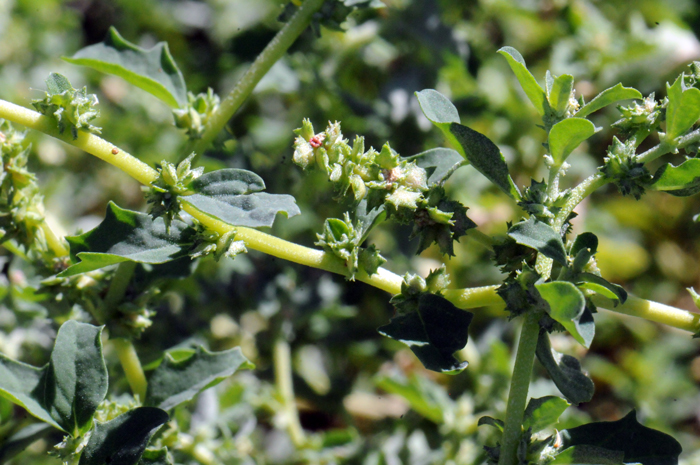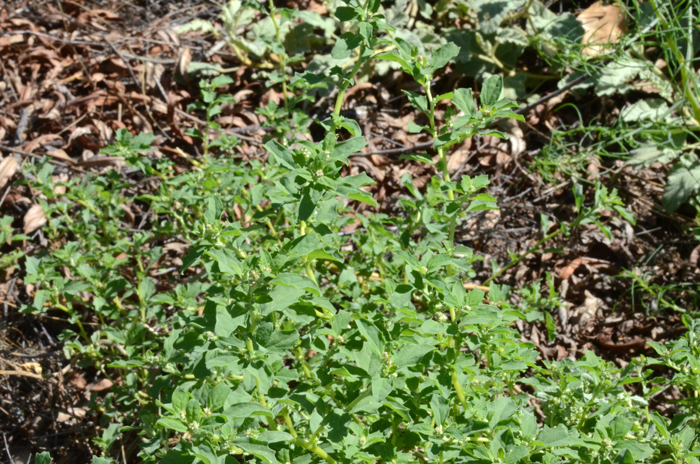Amaranthus blitoides, Mat Amaranth





Scientific Name: Amaranthus blitoides
Common Name: Mat Amaranth
Also Called: Matweed Amaranth, Matweed, Procumbent Pigweed, Prostrate Amaranth
Family: Amaranthaceae, Pigweed Family
Synonyms: (Amaranthus graecizans)
Status: Introduced; Amaranthus blitoides, originally was likely native to central and paossibly eastern United States. Now it is common and widely naturalized almost everywhere in temperate North America and in South America and Eurasia.
Duration: Annual, Summer.
Size: 6 to 24 inches (15 - 60 cm) or more.
Growth Form: Forb/herb; stems commonly prostrate or procumbent, stems variable from whitish-green to occasionally purplish to pale red; glabrous, mat forming.
Leaves: Green, shiny, pale green to dark green; alternate, up to 2 inches (5.08 cm) long, leaf shape variable obovate to spoon-shaped, wedge-shaped with pointed tips (acute.
Flower Color: Greenish, small flowers in clusters (glomerate) in axils from leafy-bracts; both male and female flowers (monecious); fruit a bladder-like capsule known as an utricle containing one black seed.
Flowering Season: July to September across North America.
Elevation: 1,000 to 8,000 feet (304 - 2400 m).
Habitat Preferences: Common roadside weed, disturbed areas, agricultural fields, sandy soils.
Recorded Range: Widely distributed across North America.
North America & US County Distribution Map for Amaranthus blitoides.
U.S. Weed Information: In North America Amaranthus blitoides has the following authoritative sources: N'East, Weeds of the Northeast; NE&GP, Weeds of Nebraska and the Great Plains, Weeds of the United States and Canada, Weeds of the West. Weeds of the United States and Canada, and Weeds of the West. Plants included here may become weedy or invasive.
Invasive/Noxious Weed Information: No information available.
Threatened/Endangered Information: No information available.
Wetland Indicator: In North America Amaranthus blitoides species has the following wetland designations: Alaska, UPL; Arid West, FACU; Atlantic and Gulf Coastal Plain, FAC; Eastern Mountains and Piedmont, FAC; Great Plains, FAC; Midwest, FACU; Northcentral & Northeast, FACU Western Mountains, Valleys, and Coast, FAC.
UPL = Obligate Upland, almost never occur in wetlands
FACU = Facultative Upland, usually occur in non-wetlands, but may occur in wetlands
FAC = Facultative, occur in wetlands and non-wetlands.
In the Southwestern United States: Arizona has 19 species of genus, California has 18 species, Nevada has 9 species, New Mexico has 19 species, Texas has 26 species, Utah has 12 species. All data approximate and subject to revision.
Comments: Amaranthus blitoides is a common weed found in a variety of areas from roadsides to agricultural fields. An easy field identification among other Amaranths is its prostrate habitat. Another similar looking species is Prostrate Pigweed, Amaranthus albus which is a bushy erect form and whose leaves may have creases or wrinkles along the margins. It may be rarely confused with Purslane, Portulaca oleracea which is also a prostrate weedy species however their leaves are not sharply pointed at the tips.According to Plants For A Future, the plants are rich in vitamins and minerals and the leaves are a substitute for spinach and eaten raw or cooked.
The name Amaranthus graecizans often has been misapplied to both Amaranthus blitoides and Amaranthus albus in older North American floras and manuals.
In Southwest Desert Flora also see: Fringed Amaranth, Amaranthus fimbriatus, Carelessweed, Amaranthus palmeri and Prostrate Pigweed, Amaranthus albus.
The species epithet ""blitoides" resembling "blitum" and old name for strawberry blite which is a course weed with a red fruit.
See complete listing of ethno-botanical uses at Native American Ethnobotany, University of Michigan, Dearborn.

